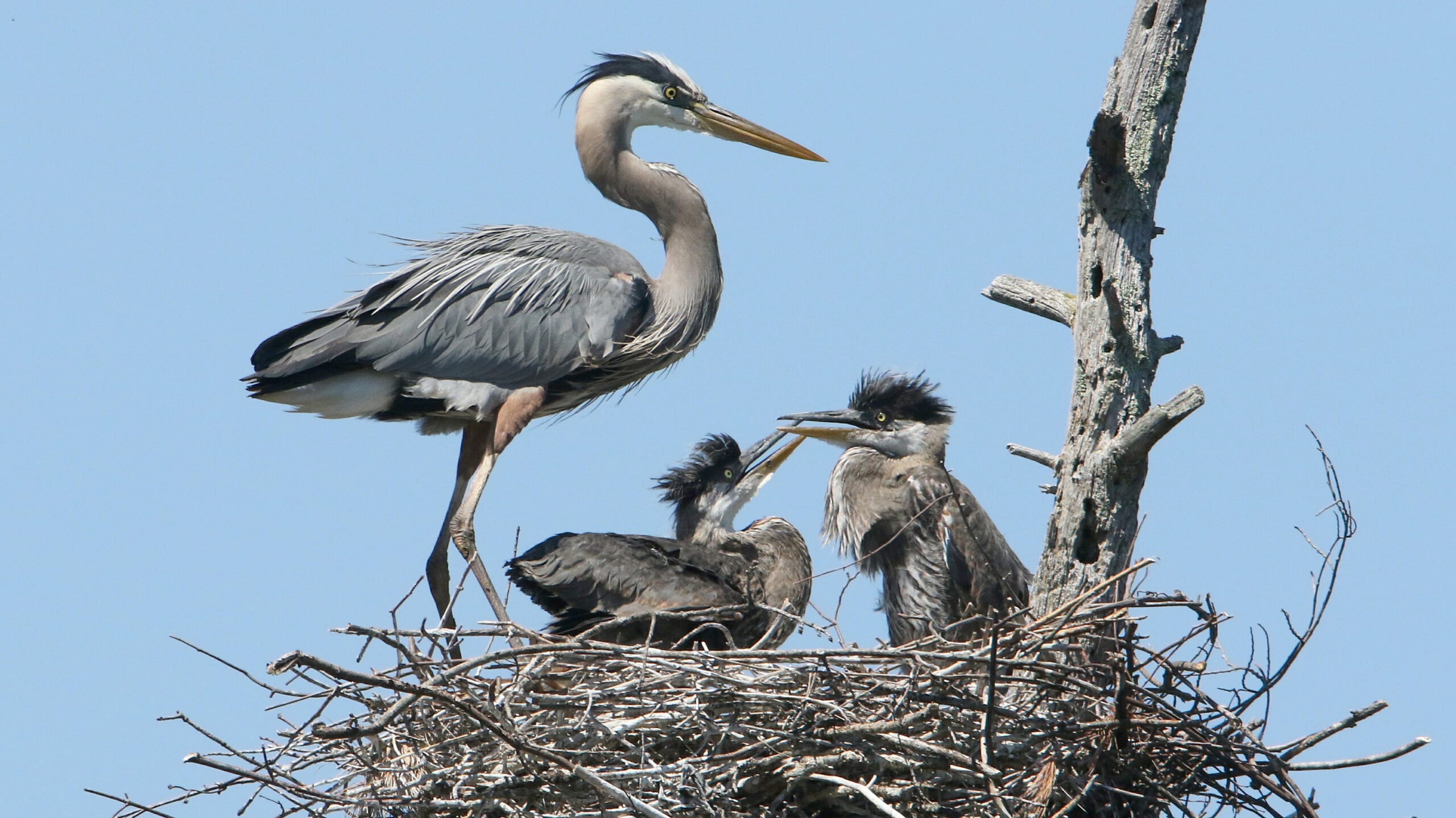By Gary Cochard – January 2024
For many years, I’ve enjoyed watching this magnificent bird nearly every day throughout the summer. We’ve all seen them walking the shoreline of Lake Anna or flying from one boathouse to another. But what do we know about the bird itself?
Well, here are a few facts I collected from the internet to help us better understand and appreciate this majestic creature.
First, the great blue heron is found throughout North America. It thrives in Canada, the United States and Mexico, allowing millions to enjoy watching this graceful bird.
The blue heron is basically a solitary hunter. They prefer to hunt alone but when mating/breeding they nest in colonies (called a heronry) that can include several hundred stick nests.  They usually build their nest in trees high above the ground, but can occasionally be found nesting on the ground, on duck blinds or even on channel markers. The male normally picks the nesting sight, with the female doing most of the construction work as the male brings a variety of building materials to the nest.
They usually build their nest in trees high above the ground, but can occasionally be found nesting on the ground, on duck blinds or even on channel markers. The male normally picks the nesting sight, with the female doing most of the construction work as the male brings a variety of building materials to the nest.
The female will lay 3 to 6 eggs (a clutch) with both parents then sharing in the incubation and other parental duties. The young birds hatch in about a month and then fledge 49-80 days later. According to my research, only 1 or 2 from the clutch will survive those early days due to either predation, starvation, heavy rain or cold weather. These factors combined often take a heavy toll on the newly hatched chicks. The blue heron does NOT mate for life and the life span is about 15 years.
The diet of the great blue heron consists of many things. They will eat anything they can catch, though fish is the mainstay. However, frogs, insects and small rodents are also ingested if they happen to come within striking range. They are lethal hunters with a very quick strike using their powerful neck and strong beak to attack their prey. They eat about a pound of fish each day supplemented by those previously mentioned menu items. Even an occasional snake may fall victim to the deadly beak. Though uncommon, they have been recorded ingesting fish as large as 8 - 12 inches in length. They swallow all fish head-first, whole and alive. Gulp!!
All great hunters must also be aware of those who prey upon them. Eagles occasionally attack the adult blue heron, with crows, ravens, gulls and other birds of prey going after the eggs and the young chicks. Other than the eagle, adults have few predators, mostly because of their size and the lack of large predators in North America.
Lastly, we might wonder why we don’t see many during the winter months. Well, the answer is simple. Most migrate, but not all. Generally, in the winter the blue heron will move away from the northern edge of their breeding range. Some fly as far south as the Caribbean. But some choose to stay put and can survive despite the cold weather. If there’s open water, they continue mainly with the fish diet. But if things get tough, they forge on anything they can find that is alive. Blue herons only eat “live” food. We’ll likely not see too many stalking the shoreline during our winter, but rest assured come spring; this majestic bird will return in great numbers to again take up their place along the banks of Lake Anna.
There is much more one can learn about this beautiful bird. I hope this article has whet your appetite to do just that. Regardless, be on the lookout for the return migration of one of Lake Anna’s beautiful treasures.
gary.cochard@lakeannavirginia.org
